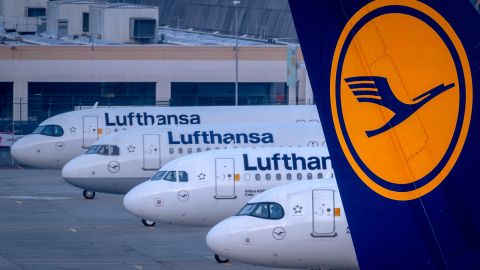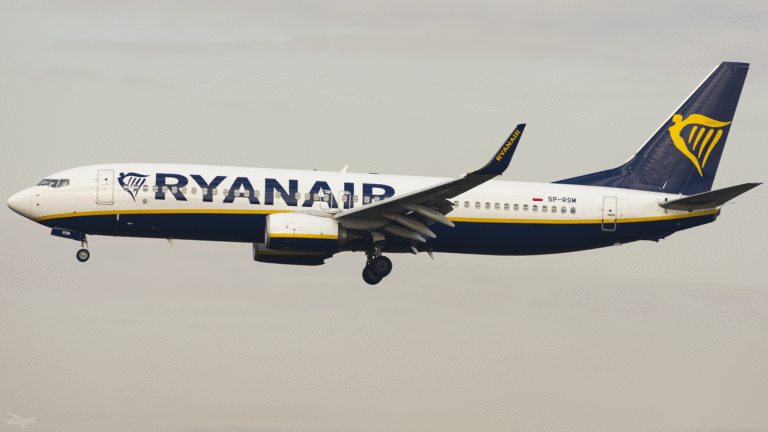Lufthansa flight flew without a pilot for 10 minutes after copilot fainted, report finds
A Lufthansa flight traveling from Frankfurt to Seville was left without an active pilot in the cockpit for nearly ten minutes after the co-pilot fainted while the captain was temporarily out of the flight deck, a Spanish aviation report has revealed. The February 2024 incident, though ending safely, has raised renewed questions about cockpit access procedures and the medical oversight of commercial pilots.
The Incident in Detail
According to the final report released by Spain’s Civil Aviation Accident and Incident Investigation Commission (CIAIAC), the incident occurred on February 17, 2024. Lufthansa Flight LH1525, an Airbus A321, had been cruising at 37,000 feet over Spanish airspace when the first officer, also referred to as the co-pilot, suffered a sudden medical emergency. The captain had momentarily left the cockpit, as permitted under normal flight operations, leaving the aircraft on autopilot and under the supervision of the co-pilot.
During the captain’s brief absence, the co-pilot reportedly lost consciousness. Flight data and cockpit voice recordings indicate the co-pilot may have experienced a seizure. A short time later, when the captain attempted to return to the cockpit, he was unable to gain access due to cockpit security protocols—protocols that were heightened after the Germanwings tragedy in 2015, when a co-pilot locked the captain out of the cockpit and crashed the plane.
For nearly 10 minutes, the aircraft remained in the air with no active pilot at the controls. Autopilot systems maintained the course, altitude, and speed, preventing any immediate threat to the aircraft. However, as the report noted, autopilot is not a substitute for human oversight in case of emergency or system failure.
A Locked-Out Captain
The report specifies that the captain followed standard reentry procedures to return to the cockpit, using the numeric keypad located outside the cockpit door. After multiple unsuccessful attempts, including entering the emergency access code, the captain triggered a silent security protocol that temporarily disabled cockpit access. Investigators believe the system interpreted the multiple entries as a potential hijack scenario.
Eventually, the co-pilot regained partial consciousness and managed to manually open the cockpit door. The captain immediately assumed control of the aircraft and requested an emergency diversion to Madrid-Barajas Airport. The flight landed without further incident, and medical personnel met the aircraft on the runway.
The co-pilot was transported to a nearby hospital and treated. Later medical evaluations confirmed that he had experienced a previously undiagnosed neurological condition. Lufthansa has not disclosed further details, citing privacy concerns.
Investigation Findings
The CIAIAC’s report focused on three key findings:
1. Medical Oversight: The co-pilot’s incapacitation was caused by a seizure linked to an undiagnosed medical condition. While commercial pilots undergo regular health assessments, the report noted that certain neurological conditions may not be detectable without specific testing. It suggested enhanced screening for conditions that could lead to sudden incapacitation.
2. Cockpit Security Protocols: The investigation highlighted a procedural vulnerability in the cockpit access system. Although the system is designed to prevent hijacking or malicious intent, it can inadvertently hinder flight safety in the event of a medical emergency. The report recommended revising protocols to allow for more flexible responses to suspected medical issues versus security threats.
3. Crew Response: The flight attendants and captain responded swiftly and in accordance with training. A physician who happened to be among the passengers provided immediate medical assistance to the co-pilot after the plane landed.
The CIAIAC concluded that while the aircraft was never in imminent danger due to modern automation systems, the lack of human supervision in the cockpit represented a significant safety gap.
Reactions and Industry Impact
Lufthansa, in response to the report, expressed relief that the incident ended without injury and affirmed its commitment to implementing all safety recommendations.
“We are reviewing the findings carefully and will work with aviation authorities to ensure that the appropriate measures are put in place,” the airline said in a statement.
The European Union Aviation Safety Agency (EASA) has also acknowledged the report and is said to be reviewing cockpit access policies, particularly in light of recent improvements in aircraft automation.
Aviation analysts note that while commercial aircraft like the Airbus A321 are designed to fly autonomously for long stretches, human pilots are still essential to make quick, complex decisions, especially during unexpected situations like medical emergencies.
“This is a clear reminder that automation can assist but not replace pilots,” said Elena Vasquez, a senior aviation safety consultant. “The technology did what it was supposed to, but it’s the human element that ultimately ensures safety.”
Lessons Learned
The incident serves as a case study in both the strengths and limitations of current airline safety systems. On one hand, the aircraft’s automated systems maintained safe flight parameters without deviation for nearly 10 minutes. On the other, it revealed how tightly controlled access systems designed for security can pose problems in medical emergencies.
The CIAIAC has issued five safety recommendations in total:
Enhanced medical evaluations for neurological conditions
Refinement of cockpit access override procedures
Mandatory crew drills simulating incapacitation scenarios
Improved training for flight attendants in cockpit access protocols
International coordination on cockpit security policy updates
Final Thoughts
Though the aircraft landed safely and all 199 passengers remained unharmed, the Lufthansa incident has raised new awareness about the delicate balance between cockpit security and accessibility. It underscores the need for redundancy—not just in aircraft systems, but also in human availability and response procedures.
As airline travel continues to rely on advanced automation, this event shows that even a brief lapse in human oversight can highlight vulnerabilities not easily solved by software alone.






